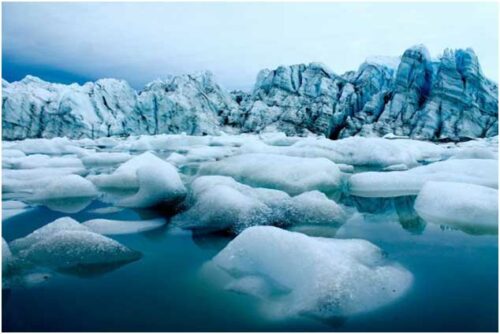What do whales, fizzy water, and a 364-foot Ferris wheel have to do with the climate crisis? In her new book, Our Biggest Experiment: The Epic History of the Climate Crisis, author and climate activist Alice Bell answers this question and many more as she explores the climate crisis from a unique perspective, focusing not only on the future of the planet but also on the history of how we reached this critical point.
Devoting each chapter to a different aspect of environmental history, Bell explains the first weather maps, the advent of electricity, and even the origins of the term “tree hugger”—trust me, it’s not what you’re expecting. Starting with scientist and activist Eunice Foote’s 1856 experiment positing the effect of increased carbon dioxide on atmospheric temperatures, Bell weaves together the story of how humans began shaping the earth. The book highlights several little-known but influential climate scientists, including Foote and Guy Calendar, the English scientist who linked Earth’s rising temperatures to rising carbon dioxide concentrations in the 1930s.
When trying to find ways to combat climate change, certain ideas crop up time and time again, like the idea of a technofix, a new technological approach to the problem of climate change that tends to oversimplify the problem and distract from the root problems. “It’s almost a magician’s trick. It’s a way of looking at shiny new tech… and not old tech that’s destroying the world,” Bell told Yale Scientific. Despite the excitement surrounding alluring new ideas like cloud seeding and artificial volcanoes, we must exercise caution. “All technology’s kind of a double-edged sword. We have to think of how we apply it, who’s in charge, and what other technologies we need alongside it,” Bell said.
One single solution will not solve the crisis, and focusing on futuristic quick fixes can distract from the basic problems that need to be addressed, like our dependence on and overuse of unrenewable energy sources. Bell remains hopeful but pragmatic: today, our future will depend more on minimizing, rather than totally reversing, climate change. Keeping the world half a degree colder might sound inconsequential, but in reality, it equates to countless lives, homes, and livelihoods saved.
Bell stresses the importance of developing a personal connection to the environment and climate. It’s easy to become cynical and apathetic when thinking of the climate crisis as an ambiguous, ominous tide of change, but forging personal connections to the environment—whether through planting trees, joining environmental action groups, or investing in renewable energy—can remind us of the close relationship between our lives and the environment. If you’re unsure where to begin, reading Bell’s book could be a good start. “It’s hard to feel like you understand [the climate crisis], but I understood it more because of the history, and so I wanted to share that with other people,” Bell said. With a more complete understanding of the past, we can hopefully begin building a more sustainable future.

